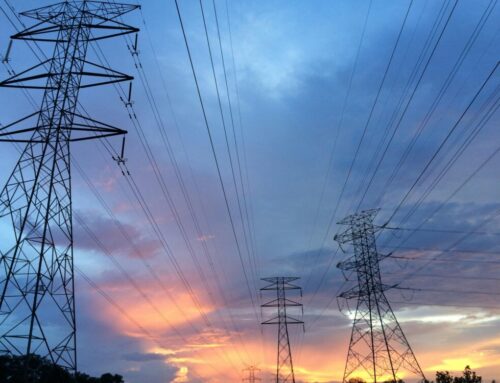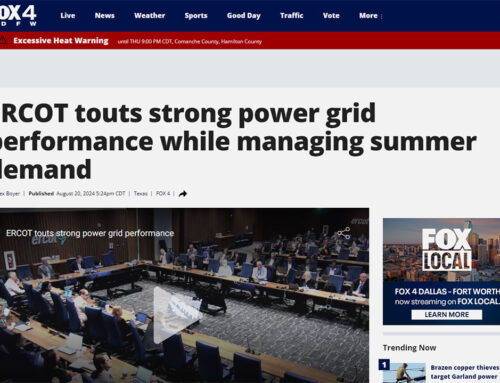UPDATE Jan. 5, 2022: Power plants and transmission facilities in the Electric Reliability Council of Texas area have been weatherized and consumers “can be confident” they will deliver electricity during the winter months, grid officials said in a Dec. 30 statement.
ERCOT said it has completed on-site inspections of more than 300 generating units and 22 transmission stations, as required by new rules passed in October by the Public Utility Commission of Texas. The assessments found 10 generation resources and six transmission facilities required additional weatherization, though ERCOT officials said these were mostly minor issues and have since been corrected.
“New regulations require all electric generation and transmission owners to make significant winterization improvements and our inspections confirm they are prepared,” ERCOT Vice President of Grid Planning and Weatherization Woody Rickerson said in a statement.
The power plant inspections cover 85% of the megawatt-hours lost during Winter Storm Uri, according to the Texas grid operator.
Dive Brief:
- The Public Utility Commission of Texas (PUC) on Thursday adjusted the scarcity pricing mechanism in the Electric Reliability Council of Texas (ERCOT) power region, lowering the high systemwide offer cap to $5,000/MWh from $9,000/MWh.
- The change is a response to the extreme winter weather in February, which knocked out power to millions of customers and left some consumers facing bloated energy bills.
- The PUC on Nov. 30 also adopted a new rule regulators say is designed to “increase the coordination between the electric and gas industries during energy emergencies.” During the February blackouts, utilities cut power to some gas facilities, which exacerbated the state’s energy woes.
Dive Insight:
The PUC order says the new $5,000/MWh price cap decision “strikes the best balance” between incentivizing power generation and enabling conservation during scarcity events.
“After the extreme weather events of February 2021, the price cap of $9,000 per MWh has proven to be a liability on market participants and customers of ERCOT,” the PUC said in its decision. But lowering the cap too much “would reduce the incentives for economic demand response.”
Unlike most other regional grids, ERCOT operates only an energy market to meet customer demand; it does not use a capacity market to ensure necessary resources will be available. The state has depended on the promise of higher prices to incentivize generation.
A joint report on the February event by the Federal Energy Regulatory Commission and North American Electric Reliability Corp., finalized in November, concluded that a combination of freezing and fuel issues caused about three-quarters of the unplanned generating unit outages, derates and failures to start in February. Of those, gas-fired units experienced 58% of all generating unit issues.
The PUC’s new gas-electric rule is supposed to improve coordination between the two sectors, helping to keep the lights on.
The rule creates a new designation for “critical natural gas facilities that supply the majority of natural gas in Texas,” the PUC said in a statement. The rule requires a critical gas facility to provide information to its electric utility, which “must use this information to prioritize natural gas in energy emergencies.”
“This rule is one of the many major steps the PUC has taken to ensure the Texas power grid will be more resilient this winter than last,” PUC Chairman Peter Lake said in a statement. “These requirements represent a fundamental change in the relationship between the natural gas industry and the electric generation industry.”
“For the first time ever, the electric transmission and distribution utilities will know the locations of the facilities which are critical to keeping natural gas flowing to the power plants that keep our lights on,” Lake said.
The new rule follows a PUC vote in October to require generators and transmission providers to weatherize their plants and systems ahead of the upcoming winter. Regulators are requiring utilities to “fix any known, acute issues that arose from winter weather conditions” and for company officials to file notarized statements that the work has been completed.
Article by Robert Walton originally published on UtilityDive.com on Dec. 6, 2021.





